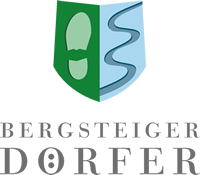Alpine pastures
The geological facade of the Matsch valley has been shaped by centuries of intensive pasture and grazing. Much of the original woodland on the orographic right side of the valley was felled for grazing cattle, sheep and goats; the fact that there is barely a spot in the pastures has not been named is a clear sign of just how intensively it was grazed
Forestry regulation of economic areas was introduced around the middle of last century, when the lands were divided into woodland and pasture zones. The woodland areas, which serve as water reservoir, avalanche protection, habitat and source of timber, have been replanted. The pastures were divided into paddocks and protected from overuse by the forestry commission, all measures which have led to the balanced plant and animal diversity of today.
Today there are three active, independent Alpine farms in the valley in the form of mountain huts with pastures, and two Alpine pasture mountains.
- The Gonda Alm alpine pasture and hut: pasture from mid-May to late October
depending on weather conditions - The Alpine pastures
- The Matscher Alm pasture and hut is open summer and winter
- The Mutberg pastures and hut
- The Upialm alpine pasture and hut
Milk pipeline to the village
The Gonda Alm alpine pasture and hut lies above the village at about 2,000 metres. Originally used as a grazing pasture for the village cows, the area has been farmed since 1983, when the alpine hut, which still stands today, was built. The farmstead consists of a roomy shepherd’s hut, a modern milking parlour and storage rooms. A milk pipeline transports the milk directly to the dairy in the village centre, where it is processed into cheese and butter. The shepherd looks after about 200 young cattle, 100 horses, 90 calves and 70 dairy cows, which depending on the weather conditions, are grazed at the pasture from mid-May to late October.
Processing milk into delicious cheese and butter
The pastures of Rastif extend out to the border with the Inner Matscher Alm pasture. A shepherd, who lives in the mountain hut above Eisa, tends approximately 70 young cattle, 20 horses and 30 calves.
In recent years the buildings of the Matscher Alm have been extensively renovated and rebuilt. They house a dairy, living rooms for dairy farmers and shepherds and a milking parlour with holding area. The milk from around 40 milking cows is processed into delicious cheese, cream cheese and butter directly on the farm, where it can also be sampled. The Matscher Alm pasture and hut is open summer and winter and welcomes hikers, families, cyclists, tourers and sledgers to enjoy a drink and a bite to eat.
The Mutberg and the Upialm alpine pasture and hut
The Mutberg pastures and hut are tended by the shepherds from the Mut Hut, high above the tree line. Young cattle and sheep graze on the exceptionally steep fields, some of them in the high mountain areas. The rugged mountain range from the Portlesspitzen, past the Weisskugel Group and the Oberettes alpine hut up to the Saldurseen lakes are used as grazing land.
The Upialm pasture and hut is located in a valley to the orographic left of the Glieshof farm. It is owned by the farmers from Schluderns, who bought the pastures in exchange for a “snack” many moons ago. The milk is processed into cheese and butter on-site.

